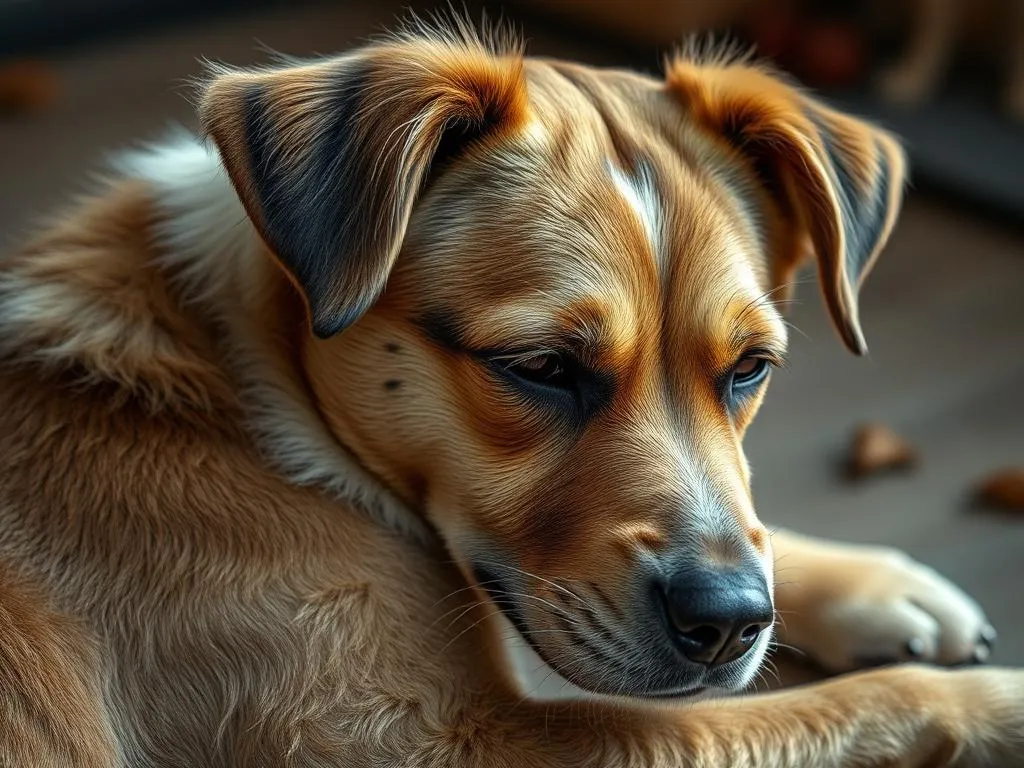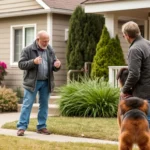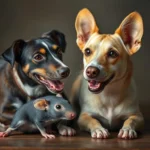
I. Introduction
The bond between dogs and humans is one of the most profound relationships in the animal kingdom. Dogs have been our companions for thousands of years, providing loyalty, companionship, and, in many cases, unconditional love. As dog owners, we often find ourselves pondering the various behaviors exhibited by our furry friends, leading us to ask, “Why does my dog hug me?” Understanding the reasons behind such affectionate behaviors can enhance our relationship with our pets and improve our interactions.
In this article, we will delve into the intricacies of dog behavior, explore the reasons why dogs hug their owners, and provide insights into how to respond to this endearing action. By understanding the motivations behind your dog’s behavior, you can create a more harmonious and fulfilling relationship.
II. Understanding Dog Behavior
Basic Canine Communication
To grasp why your dog may hug you, it is essential to understand how dogs communicate. Dogs primarily use body language to express their feelings. Common signs of affection include wagging tails, relaxed body posture, and, of course, hugging. These behaviors are crucial for interpreting how your dog feels about you and their environment.
Hugging, while it may seem like a human-centric behavior, is often a form of communication in dogs. A hug from a dog can be a sign of affection, comfort, or even a request for attention.
The Social Nature of Dogs
Dogs are inherently social animals. They thrive in packs, whether that pack consists of humans, other dogs, or a combination of both. This social structure is vital to their behavior and emotional health. Socialization plays an important role in a dog’s life, helping them learn how to interact appropriately with others.
Understanding this social nature can provide insight into why your dog feels compelled to hug you. In their eyes, you are a part of their pack, and hugging can be a way of reinforcing the bond you share.
III. Reasons Why Dogs Hug Their Owners
Affection and Bonding
One of the primary reasons dogs hug their owners is to express affection and bonding. Just as humans hug to show love and care, dogs have their own ways of demonstrating their feelings. A dog’s hug can be a sign that they love and trust you, reinforcing the emotional connection between you.
When you receive a hug from your dog, it is their way of saying, “I love you.” This behavior is often accompanied by other signs of affection, such as licking or cuddling, which further emphasizes their emotional state.
Seeking Comfort and Security
Dogs, like humans, experience anxiety and stress. When they hug their owners, they might be seeking comfort and security. This behavior can be particularly evident during stressful situations, such as thunderstorms, fireworks, or when they encounter unfamiliar environments.
Hugging provides reassurance, making them feel safe in your presence. If your dog often seeks you out for a hug during these moments, it is a clear indication that they find solace in your company.
Attention-Seeking Behavior
Another reason why your dog may hug you is to seek attention. Dogs quickly learn that certain behaviors elicit a response from their owners. If hugging consistently results in petting, treats, or playtime, your dog may be using this behavior as a way to gain your attention.
Understanding this aspect of dog behavior is crucial. It highlights the importance of behavioral reinforcement and how it can shape a dog’s actions over time. If your dog is hugging you for attention, consider whether you are inadvertently encouraging this behavior by responding positively.
Instinctual Behavior
Some experts suggest that hugging is an instinctual behavior in dogs, rooted in their wild ancestors’ pack dynamics. In the wild, dogs rely on physical contact to reinforce social bonds and establish hierarchy within the pack. Hugging in domestic dogs may be a remnant of this instinct, serving as a way to maintain the pack’s cohesion.
This connection to their wild ancestors underscores the importance of understanding dog behavior in a broader context. Recognizing these instinctual behaviors can help you appreciate the significance of your dog’s hugs.
IV. Variations in Hugging Behavior
Individual Differences Among Dogs
Not all dogs hug in the same way. Factors such as breed, personality, and past experiences can significantly influence a dog’s hugging behavior. For instance, some breeds are naturally more affectionate than others, while a dog’s past experiences can shape their willingness to engage in hugging.
Understanding these individual differences is crucial for interpreting your dog’s behavior accurately. Just because one dog hugs frequently doesn’t mean all dogs will exhibit the same behavior.
Situational Factors
The context in which your dog hugs you can also vary. Certain situations may prompt your dog to seek out hugs more than others. For instance, dogs may be more likely to hug when they sense their owner’s mood is low or when they are in a familiar and comfortable environment.
Observing when and where your dog is more likely to hug can provide insight into their emotional state and strengthen your bond. For example, if your dog hugs you after a long day, it may be their way of connecting and providing comfort.
V. How to Respond to Your Dog’s Hugs
Positive Reinforcement
When your dog hugs you, it is essential to respond positively. Positive reinforcement can help reinforce affectionate behavior, making it more likely for your dog to repeat the action. This can include petting, verbal praise, or even treats.
By rewarding your dog for hugging, you are acknowledging their affection and strengthening your bond. This encourages them to continue showing love in their unique way.
Understanding Your Dog’s Needs
Not all hugs are created equal; sometimes, a hug may signify distress rather than affection. It is crucial to recognize when your dog’s hugs stem from anxiety or fear. By paying attention to their body language and overall behavior, you can better understand their needs.
If your dog is hugging you during a stressful situation, it may be beneficial to provide reassurance through calming techniques, such as speaking softly or creating a safe space for them.
Healthy Boundaries
While hugging can be a heartwarming gesture, it is also essential to teach your dog about healthy boundaries. Dogs should understand when it is appropriate to hug and when they should respect personal space. This can help prevent any unwanted behaviors, especially if your dog tends to hug excessively or in inappropriate situations.
Training your dog to understand cues for when to hug can lead to a more balanced interaction and a healthier relationship.
VI. Signs Your Dog May Need More Than Affection
Behavioral Changes
Sometimes, excessive hugging can mask underlying issues such as anxiety or fear. If your dog displays behavioral changes, such as increased clinginess, aggression, or withdrawal, it may be time to assess their emotional well-being. These signs may indicate that your dog is struggling with their feelings and needs more than just affection.
Being vigilant about these changes can help you identify when your dog may be in distress and require additional support.
When to Seek Professional Help
If you notice persistent behavioral issues or significant changes in your dog’s demeanor, it may be time to seek professional help. A certified dog trainer or behaviorist can provide valuable insights and strategies for addressing any underlying problems.
Recognizing when your dog needs more support than you can provide is essential for their well-being. Seeking professional guidance can ensure your dog receives the care and attention they need.
VII. Conclusion
The emotional bond between dogs and their owners is a unique and rewarding relationship. Understanding why your dog hugs you can deepen this connection and enhance your interaction. By recognizing the various motivations behind your dog’s behavior, you can nurture their emotional needs while reinforcing the affection you share.
Take the time to observe your dog’s hugs and what they signify. By doing so, you will foster a deeper understanding of your furry friend and create a loving environment that benefits both of you.
In the end, nurturing your relationship through understanding and affection is the key to a happy and fulfilling companionship with your dog.









